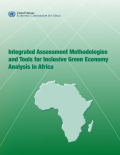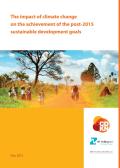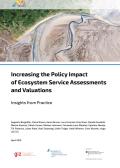This 5th edition of the Global Green Economy Index (GGEI) is a data-driven analysis of how 80 countries perform in the global green economy, as well as how expert practitioners rank this performance. This new GGEI presents one such framework, offering an integrated performance assessment of climate change, the environment, efficiency sectors and investment to better understand where nations stand today and what they can improve on or leverage to do better in the future.
The performance index of the 2016 GGEI is defined by 32 underlying indicators and datasets, each contained within one of the four main dimensions of leadership & climate change, efficiency sectors, markets & investment and the environment.
This report provides an overview of the newest GGEI results from the 5th edition, as well as more detail on how GGEI's research and data can enrich the work of others in this space.
The Little Green Data Book provides approximately 50 indicators for more than 200 countries based on World Development Indicators 2016 and its online database. Key indicators are organized under the headings of agriculture, forestry, biodiversity, energy, emission and pollution, and water and sanitation. Data is presented for the regions of East Asia and Pacific, Europe and Central Asia, Latin America and the Caribbean, Middle East and North Africa, South Asia, and Sub-Saharan Africa.
Several of these indicators have the potential to measure progress on the SDGs. These indicators measure the use of resources and the way human activities affect both the natural and the built environment including: measures of natural resources (forest, water, and cultivable land) and degradation (pollution, deforestation, loss of habitat, and loss of biodiversity).
The 2016 edition measures sustainability by expanding the conventional way of measuring national saving to include natural resource deplate and degradation of the environment as well as investment in human capital.

The inclusive green economy has gained considerable attention in past years as an action-oriented approach and one of the tools for realizing sustainable development. The main contribution of this approach has been identified as integrating economic, social and environmental dimensions of development policies in a coherent, cross-sectoral framework of analysis. As governments begin to develop and implement inclusive green-economy strategies, more attention is being given to research into the use of methodologies and tools to identify social, economic and environmental trends, and the evaluation of the likely outcomes of implementing inclusive green economy policy.

A high-ambition agreement that provides a clear policy framework for action on climate change, incentivises international cooperation, and mobilises additional resources for mitigation and adaptation activities is essential to give us the best chance of achieving the SDGs by 2030. Likewise, strong SDGs will help to lay the policy groundwork for achieving and implementing a more ambitious climate agreement.
This report, The impact of climate change on the achievement of the post-2015 sustainable development goals, considers impacts on development over the next 15 years, under two scenarios for the 2015 climate change agreement: a high-ambition agreement and a low-ambition agreement. It looks at associated policies and levels of investment in mitigation and adaptation. The high-ambition scenario used is based on the UNFCCC aim to limit global warming to a 2°C increase on pre-industrial temperatures.

